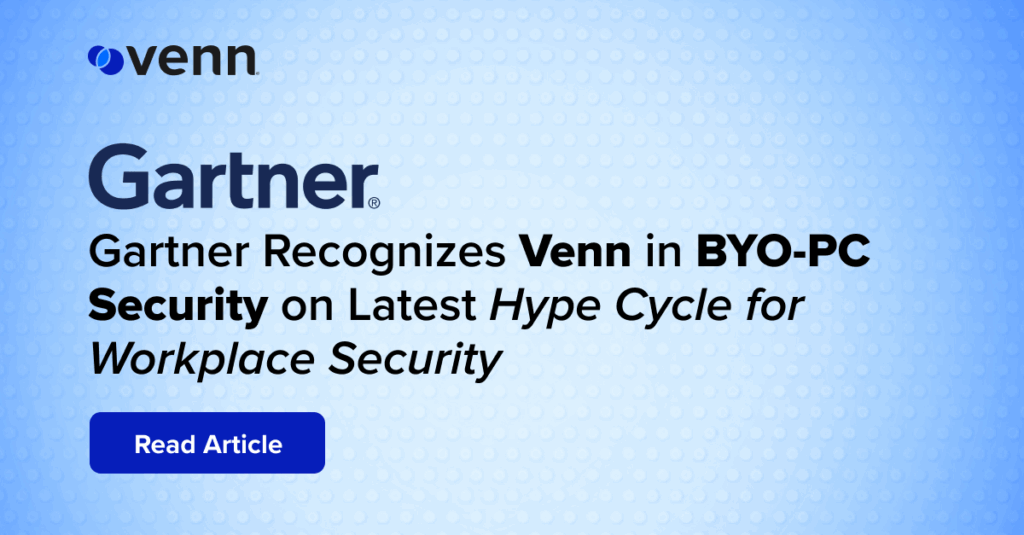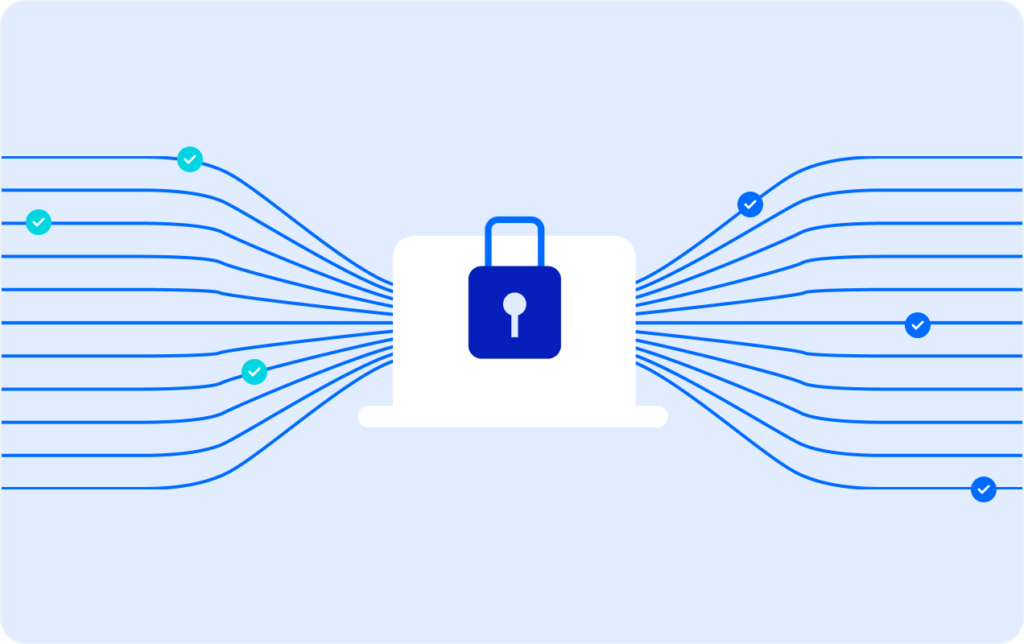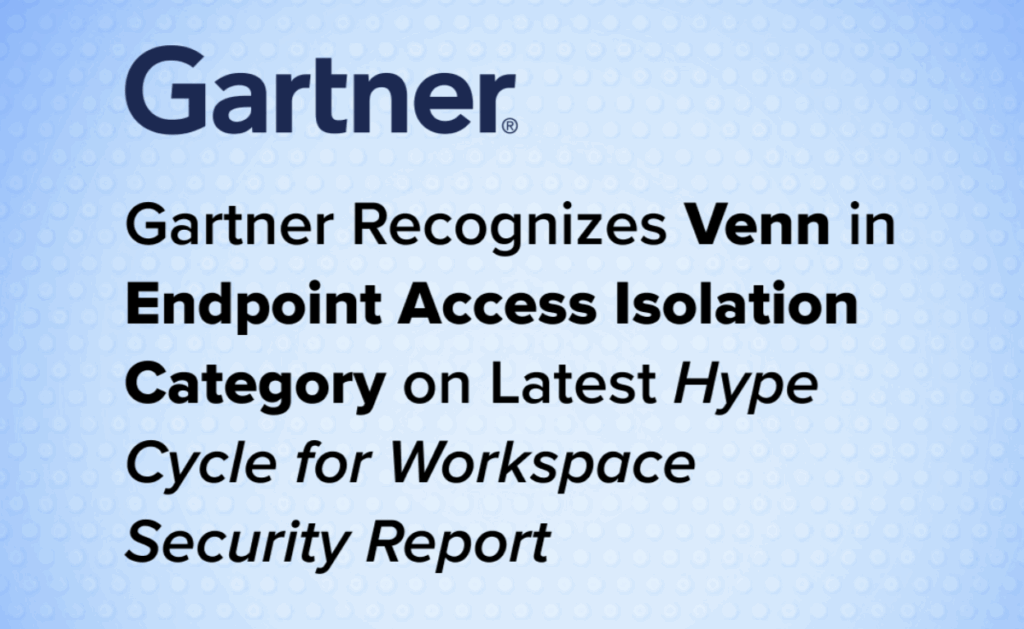Keep Up with the Latest News
No More Shipping Laptops: How an International Financial Enterprise Cut Hardware Costs with Venn


December 30, 2025
Blog
No More Shipping Laptops: How an International Financial Enterprise Cut Hardware Costs with Venn
An international investment company with nearly $300B in assets was looking for a viable way to address rising hardware procurement and shipping costs for company-issued devices. The organization employed international contractors across the U.S., Europe, and Asia. Each time a new contractor was hired, the company had to purchase and ship a laptop before work […]
How a Global Aircraft Manufacturer Secured 7,000 Remote Employees, Contractors and Suppliers – Without VDI or Issuing Laptops


December 23, 2025
Blog
How a Global Aircraft Manufacturer Secured 7,000 Remote Employees, Contractors and Suppliers – Without VDI or Issuing Laptops
One of the world’s leading aviation manufacturers was looking for a solution to help secure remote workers all over the globe. With over 7,000 internal and supplier-based remote workers, enabling secure work on personal laptops was essential – both to control costs and to simplify IT operations, as issuing laptops across the globe was quickly […]
How a Global Immigration Law Firm Uses Venn to Enable Compliant Remote Access – Across Personal Laptops


December 16, 2025
Blog
How a Global Immigration Law Firm Uses Venn to Enable Compliant Remote Access – Across Personal Laptops
An immigration law practice with international contractors needed a secure way to manage legal workflows while keeping teams seamlessly connected. Handling sensitive immigration documents across the US, Europe, and South America required employees to communicate quickly and share sensitive information without friction. The firm knew VDI would introduce slow log-ins, lag, and latency that would […]
Gartner Recognizes Venn in BYO-PC Security Category


December 14, 2025
Blog
Gartner Recognizes Venn in BYO-PC Security Category
The office has expanded far beyond four walls, and so has the device footprint. Today, many employees, contractors, and consultants rely on their own laptops to get work done. This shift to BYO-PC (Bring Your Own PC) has clear benefits for flexibility and cost, but also introduces a serious security gap. Personal PCs are harder […]
What Is the ABC Test? A Guide for Hiring Contractors


December 9, 2025
Blog
What Is the ABC Test? A Guide for Hiring Contractors
Hiring independent contractors offers organizations flexibility, speed, and access to specialized talent. But in many states—especially California—properly classifying workers is not just a best practice, it’s a legal requirement. At the center of this conversation is the ABC Test: the standard increasingly used to determine whether a worker is truly an independent contractor or must […]
Onboarding Contractors: VDI Was Drastically Delaying Productivity. That’s When Venn Stepped in.


December 9, 2025
Blog
Onboarding Contractors: VDI Was Drastically Delaying Productivity. That’s When Venn Stepped in.
A leading smart-home HVAC manufacturer with thousands of contractors in the field needed a way to enable their users to be as productive as possible – as quickly as possible. They also needed a way to ensure their contractor workforce wasn’t exposing the business to unnecessary risk. A virtual desktop was selected many years ago, […]
Gartner Recognizes Venn in Endpoint Access Isolation Category on Latest Hype Cycle for Workspace Security Report


December 2, 2025
Blog
Gartner Recognizes Venn in Endpoint Access Isolation Category on Latest Hype Cycle for Workspace Security Report
The workplace is no longer confined to the office – and endpoints are no longer just company-issued devices. Today, contractors, consultants, and remote employees often work on their own laptops – devices IT can’t directly manage or secure. How to protect these BYOD endpoints is now a top priority, especially in regulated industries like finance, […]
Why California’s ABC Test Makes Issuing Laptops to Contractors a Growing Liability — And How Blue Border™ Solves It


November 24, 2025
Blog
Why California’s ABC Test Makes Issuing Laptops to Contractors a Growing Liability — And How Blue Border™ Solves It
Across California – and increasingly in other states with strict worker-classification rules – organizations are facing a new challenge: how do you secure work for contractors without exposing yourself to misclassification risk? Under California’s ABC Test, issuing company-managed laptops to independent contractors can undermine their classification and trigger steep compliance and financial consequences. Yet many […]
A New Wave of Citrix and Cisco Zero-Day Attacks Highlights the Risk of Centralized Remote Access


November 13, 2025
Blog
A New Wave of Citrix and Cisco Zero-Day Attacks Highlights the Risk of Centralized Remote Access
Why Local-First Security Solutions Like Venn’s Blue Border Are Emerging as Popular Alternatives to VDI A surge of newly discovered vulnerabilities targeting Citrix NetScaler, Cisco ISE, and related gateway infrastructure is shining a bright light on a long-standing problem in remote access security: the most critical systems in traditional VDI and VPN architectures are also […]